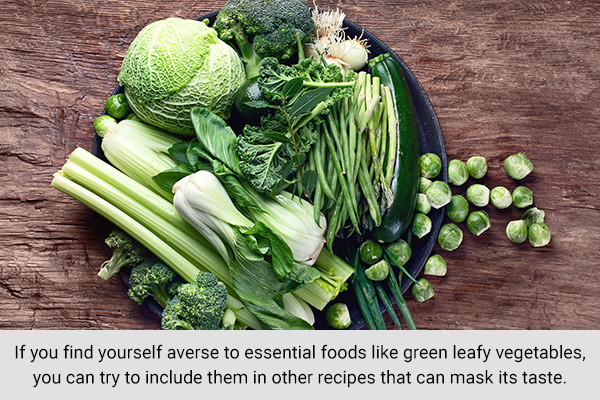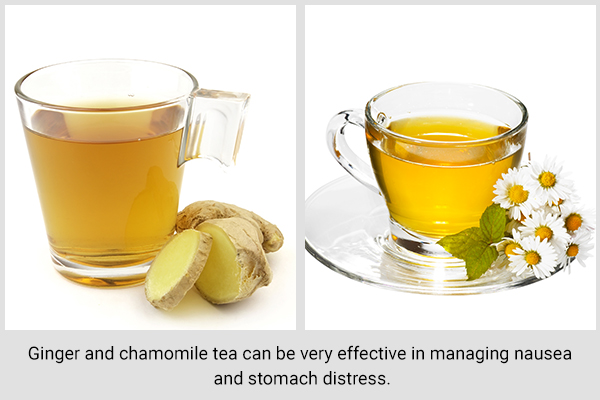In this article:
Pregnancy is a beautiful period in a woman’s life, and most look forward to the opportunity to bring new life into this world. However, a woman experiences severe physiological changes during pregnancy that affect physical appearance, mood, behavior, eating habits, and sleep patterns.

One of the most notable and perhaps a bit inconvenient changes that occur during this period is food aversion, which is a sudden like or dislike to foods that the pregnant woman had eaten her entire life.
The most common food aversions include caffeinated beverages such as tea or coffee, meat, eggs, fish, and aromatics such as garlic or onion. (1)
Why Food Aversion Occurs
Food aversions during pregnancy are experienced by many women all over the world, and the severity varies from 50%–90%. (1) Food aversions can sometimes disappear in the duration of pregnancy, but some women experience them throughout the entire term of pregnancy.
Though the exact reason food aversions are experienced by pregnant women is unknown. However, experts suggest a few reasons.
1. The maternal-fetal protection hypothesis
The idea of maternal-fetal protection arose from the ability or need of expecting mothers to protect their unborn child. Immune changes in the mother’s body upon pregnancy can increase the risk of infections. The aversions, nausea, or vomiting is thought to protect the mother and fetus from foods that could possibly make her ill. (2)
2. Hormonal changes
The hormonal changes experienced during pregnancy also influence food aversions.
There is a rise in human chorionic gonadotrophin hormone (hCG), which is produced in the placenta and helps thicken the uterine lining to support the growth of the baby. These levels are high for up to the first 10 weeks of pregnancy.
High hCG levels cause nausea and vomiting, which are implicated in dictating food aversions. (3)
3. Changes in smell and taste

Constant nausea and vomiting can influence the taste buds, changing the way pregnant women perceive flavors. Along with off-putting or strong smells, these changes can lead to severe food aversions. (4)(5)
4. Cultural influence
Studies and observations have found cultural taboos to also influence food aversions.
Various cultures and communities often have a list of foods pregnant women are asked to avoid, and the practice is transferred from one generation to another. These foods can be avoided because they may be harmful to the growing fetus or to the mother herself. (2)
The knowledge that certain foods are asked to be avoided can also lead to an aversion to that particular food. Strongly scented foods such as raw fish and garlic are common foods that women can experience aversions to.
Common Food Aversions and Managing Them

Though not likely, food aversions can lead to a risk of malnutrition in pregnant women.
Moreover, common food aversions such as garlic or onion can alter food’s flavor and reduce the amount of nutrients pregnant women consume.
Here is how you can manage food aversions.
1. Use different recipes or combinations

If you find yourself averse to essential foods such as green leafy vegetables, you can try to include them in other recipes that can mask their taste.
Foods such as green leafy vegetables are an important source of folic acid, fiber, and iron, which are all essential to maintaining a healthy pregnancy and adequate fetal growth. In addition, fiber can ease constipation and reduce the risk of maternal gestational diabetes. (6)(7)
You can add green leafy vegetables into smoothies, puree them, and use them to prepare gravies or cutlets.
2. Include other ingredients with similar nutrients
If you find the smell of fish or meat intolerable, and using other recipes doesn’t work, you can replace these with other sources that have similar nutrients.
Meat and fish provide proteins, healthy fats, and B-complex vitamins including B12 and B6, which are all essential to maternal and fetal health. (8)(9)
You can instead include more vegetarian sources of protein and fat such as lentils, beans, legumes, nuts, milk, and dairy products. (10)
3. Replace the ingredients
Certain aromatic ingredients such as garlic and onion, vinegar, and soy sauce can also be strong triggers of nausea. In such a case, the easiest thing you can do is replace them with other ingredients that have similar flavor profiles but more tolerable smells.
For instance, use green onion instead of onion and ginger instead garlic, and flavor foods with lemon or herbs such as sage, lemongrass, and thyme.
The plus point of using lemon is that its scent reduces the occurrence of nausea and vomiting! (11)
4. Switch beverage choice
Some women find themselves averse to the scent of coffee or tea. Since these beverages are such common everyday drinks, it may be difficult to replace them.
If you try other choices for teas such as herbal teas or green tea, you can not only manage your aversion but also reap their therapeutic benefits. (12)
Precautions to Consider
Pregnancy is a sensitive time for an expecting mother, and an imbalance of nutrients can put the fetus at risk of having a low birth weight and defects due to nutrient deficiencies.
Since this article covers a list of general and not specific food aversions, you may need focused care to address your specific needs. It is best to consult a dietitian to identify a balanced diet as well as ways to manage aversions.
Most-Asked Questions About Food Aversions During Pregnancy
What teas can I drink during pregnancy?

Ginger and chamomile tea can be very effective in managing nausea and stomach distress. Avoid raspberry leaf tea until the very end of pregnancy as it can induce contractions.
Can food aversions predict the gender of the baby?
Though some cultures and old wives’ tales suggest that a like and dislike of certain foods can predict the gender of the unborn child, there is no evidence supporting this claim.
Final Word
Food aversions in pregnancy are common and are usually easily managed by making changes to the diet. It is important to address these aversions as avoiding foods can lead to nutrient deficiencies.
- Was this article helpful?
- YES, THANKS!NOT REALLY


